Dancehall history : Clevie Browne interview – Exclusive
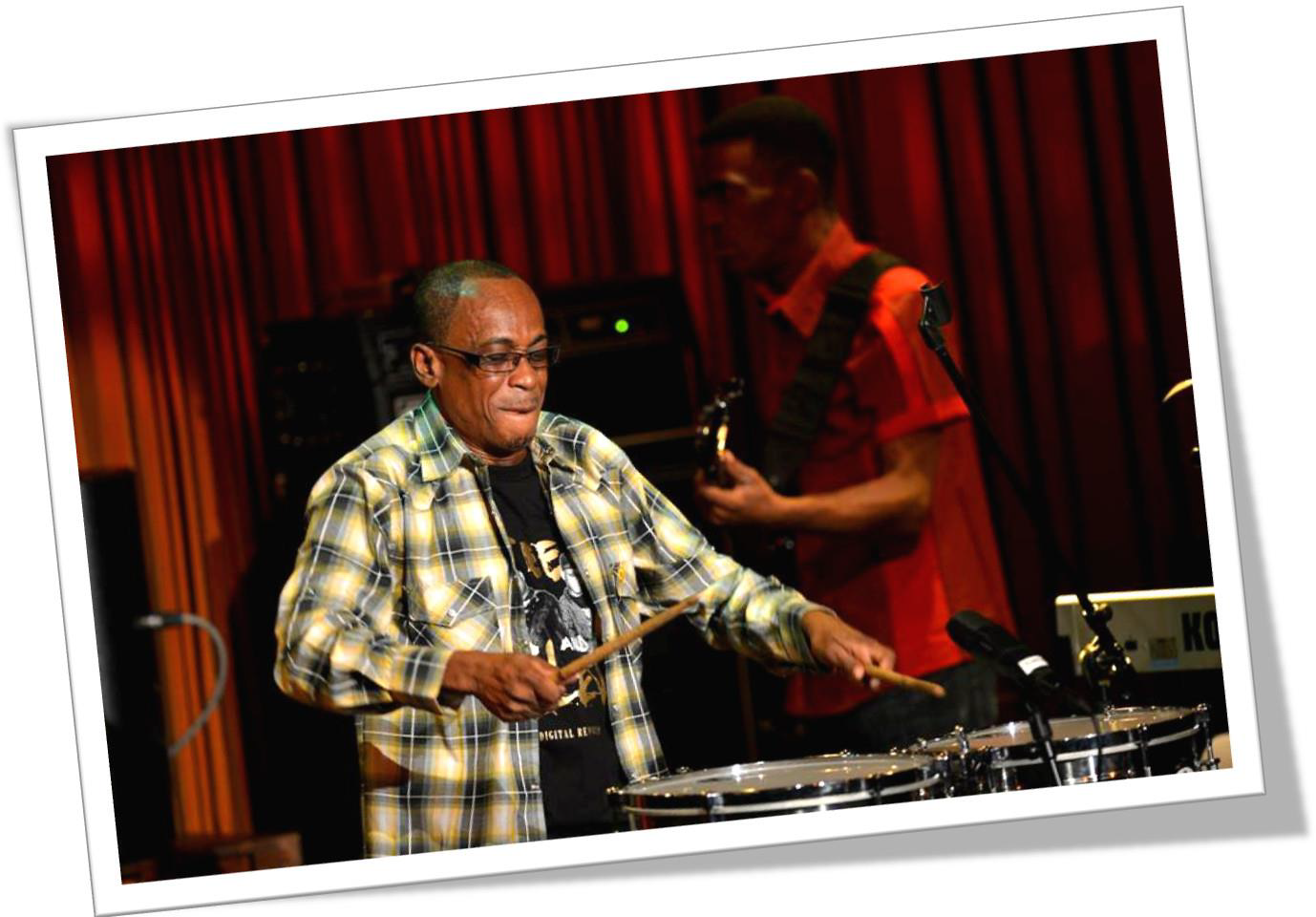
Alongside Steely Johnson, Clevie Browne formed a musical duet that pioneered a new musical genre : DANCEHALL
Who really knew Steely (keyboards) and Clevie (drums) worked at Lee Perry’s Black Ark studio ? That Clevie was a drummer for Coxsone at Studio One in the 70’s ? That he played on two Bob Marley songs and on « Africa must be free » by Hugh Mandell ?
With « Steely » Johnson (RIP), Clevie created music anthems and produced numerous artists as Shabba Ranks, No Doubt, Sean Paul, Dawn Penn to name a few. Plus E. V. E. R. Y. dancehall heavyweights since the mid 80’s have used their riddims (Ninjaman, Garnet Silk, Capelton, Chaka Demus, Bounty Klller, Vybz Kartel…). They really created digital dancehall standards, following the path started by Studio One.
How did you meet drums ?
Cleveland « Clevie » Browne : Stephen Stewart, a keyboard player who did work for Bob Marley and The Wailers as well. Over the years, his mother was a minister in a Pentecostal church where Stephen Stewart was the organist, he invited me to come with him one night, I started hearing beats that I wasn’t exposed to as much like, you know tambourine, really Pentecostal Revival type of music. There was a drummer there, he was not trained or anything and when he wasn’t there, I played and took over so I started playing the same beats with the tambourines and so and so. And it actually influenced some of the works of Steely and Clevie did, the Poco Man Jam riddim for instance and I started researching more deeply
Clevie Browne : I am from a tightly knit family. Summer holidays we used to travel to different rivers and beaches all over Jamaica but one of the beaches we went to one year, we took a route through St Thomas where for the first time I heard Revival music live. On the roadside there was this Revival thing going on and it really blew me away and I’d say it stayed with me…These kinds of beats. And doing more research, I realised that they were so many beats, the Etu, Kumina, that were from Africa, a part of reminiscence of music we took with us from Africa and I started including some of the elements of those beats in our music Dancehall and I would say that Dancehall came from those beats, a lot of those beats and I can confirm it cause I was the person who did it !
I would say that Dancehall came from those beats, a lot of those beats and I can confirm it cause I was the person who did it !
Clevie Browne
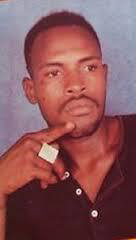
crédit : droits réservés
What’s the story behind the « Poco Man Jam » riddim ?
Clevie Browne : Some of those things we could not program them to feel like the real Revival music so I decided to add live elements to the rhythm..Mixing Lab studio had a pair of timbales with the two drums here, so I said Steely : « I want to use that… Can’t program this to feel the right way », so on top of the program (he bangs again the board), I decided to add on top it timbales playing the feels, the Revival type of songs ; so I pitched the timbales in a tuning, like a higher pitch range than what it was in the studio, and started to put it on the thins so we ended up with the (he bangs again the board), and the things just worked together so well.Yes this is it ! We have it now ! Over the years we started experimenting more and more like when Shabba Ranks came, we produced this album went gold [3], it had « Trailer load a girls » that had the same kind of beat, one the biggest Shabba sales hit songs and then « Ting a ling a ling »[4]. We come after with a beat we call it Giggy [5] Steely came out with this name, I don’t know how he got that name from but he used to love gig as a boy, he used to make gigs out of wood carve into a corner sheet and hold it out and watch string. Steely came to studio one morning and said he could not sleep all night long because there was this Revival taking place, a tent was set up near his house, and all night this music was playing so he said « if you cannot beat it, join it », so he came to the studio and said Clevie : I want to make a Pocco riddim !
WATCH VIDEO Gregory Peck – Poco Man Jam
He started including some tambourine in the riddims but at the same time I was being inspired by what I was hearing at church. Of course I was doing electronic music, so I started programming some of the beats and what we came on with, the Poco Man Jam riddim eventually, was introduced in the hispanic market. El General in Panama [1] started using it in the « flip side» of the rididms that we made. We gave Bobby Digital [2] a version of the riddim and Shabba Ranks made a song named « Dem bow » and it ended up in Puerto Rico and for some reasons Puertoricans made what they call Reggaeton. So Reggaeton actually came from Reggae Dancehall. The first beat like that was made by Steely and Clevie in 1989 : Poco Man Jam. At that time, the One Drop was what running the place in Jamaica… Reggae One Drop with the third beat accent but Steely and I wanted to do something different. We needed something new. What can we do new ? So, we stopped listening to everything that was out there, we stopped listening radio, we just took time out to just try find something from our roots…A just natural thing. We just worked with what we were feeling and we took time out to listen to the people… To listen to the rhythm of life and just observe the people. We used to leave the studio at times, drive, go to Trench Town, go to Tivoli, just drive through Jamaica, and just listen to how people spoke, the rhythm speech, the body language… Just looking at a fat woman walking with a basket on her head, things like that that were influences… And a melting pot of what became Dancehall and Revivalism is a key part of that, the inspiration from church, from reggae as well, we listened to everything… Those days, we did not have ProTools ; we played with what we had so it’s what we started with (he bangs his board) but there was something missing after the basic part of the thing, the core of it. It needed a sub tttttttt ttttt ttttttt, and I did not have it those days. The machine I was using did not have that sound. So I started experiment tuning the drums out of the box, tuning, pitching the things in different ways that were probably not meant to be in the spectrum of the tuning. It did not sound natural. It all started making the things sound closer to the ethnic sounds that we hearing in St Thomas and so. Steely had a bass (machine) that – again by accident -, this thing just happened, the bass fell (a little keyboard which was really meant to play high frequencies) but when it fell from him and he took it up, it was not working right, he took it to a technician, not really trained music, but who did electronics. When he got it back and plugged it, it was playing BASS and the bass was really smooth and ideal sound that we were looking for…PERFECT, DEEP AND SMOOTH. It sounded like the Studio One bass after you run it through an amplifier and you get that deep boomzzzzzzzzz, boomzzzzzzz. This is it : the combination of these two sounds and the downbeat (Clevie then bangs and imitates the sound it was making). Wooohh, I remember Roy Francis, it was at Mixing Lab studio where we were working at that time, everybody was amazed by this new sound… New thing, new era !!!
What about the drums rolling you used ?
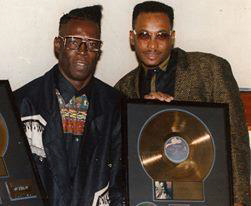
Clevie Browne : Some of those things we could not program them to feel like the real Revival music so I decided to add live elements to the rhythm..Mixing Lab studio had a pair of timbales with the two drums here, so I said to Steely: I want to use that… Can’t program this to feel the right way, so on top of the program (he bangs again the board), I decided to add on top of it timbales playing the feels, the Revival type of songs ; so I pitched the timbales in a tuning, like a higher pitch range than what it was in the studio, and started to put it on the things so we ended up with the (he bangs again the board), and the things just worked together so well. Yes this is it ! We have it now ! Over the years we started experimenting more and more like when Shabba Ranks came, we produced this album went gold [3], it had « Trailer load a girls » that had the same kind of beat; « Trailer load of girls » which is one the biggest Shabba sales hit songs and then « Ting a Ling a Ling »[4]. We come after with a beat we call it Giggy [5]. Steely came out with this name, I don’t know how he got that name from but he used to love gig as a boy, he used to make gigs out of wood carve into a corner sheet and hold it out and watch string «
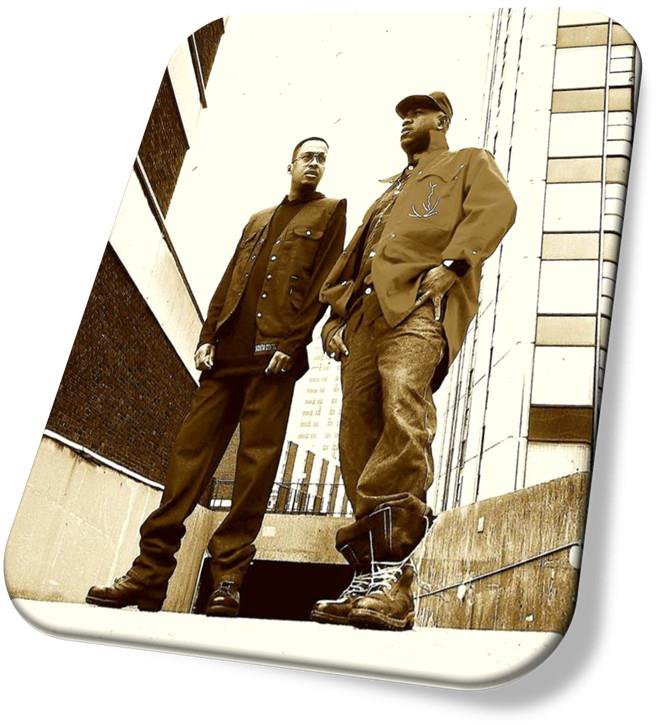
A new music purposely built :
A Digital Revolution
Clevie Browne : « In addition to the sound of the music changing and the introduction of digital equipment we also wanted to create new music, something fresh, something different so it was a deliberate things we were starting, searching for new songs, different. We did not have the sound digitally so I used to do music with my mouth and sampled it. Well in the Revival music, in the church sometimes you hear something like « hum hum » – Wigmore Francis – : Trumping ! [6] – Clevie – : How you call that ? Trumping… well, I did not even know the name and we used to be in the studio and do that on the downbeat, on the riddims with the songs. I made a riddim track named the Nine Nights in the 90’s [7] and I couldn’t find the right sounds and one day I just walked around the room, in the studio and hit on the wood, so the board wood we used at studio 2000, the wood resonated… I just walked around and try knock the things. We eventually used the sound that the wood gave. In the studio, hit the side of the wood and record it, adding to EQ until we found sounds close to I would call hearing travelling to St Thomas. They were drums you could not buy in the music stores for instance, they used to carve their own things, get goat skins, make their own drums. I would take a cardbox board for instance and added to the overall combination of sounds, hit the skin until we found what we felt right. The flooring of Studio 2000 [8] for instance, everything was used to make riddims and I remember on the Nine nights riddim I was looking for a sound close to a break rotor and could not find one. I had to go outside at my car, pull off the break rotor, playing it, recorded it and put it back in my car…That night I could not leave the studio without having this sound. At Jammy’s we did not work so late in the night because this area was volatile.
That night I could not leave the studio without having this sound. At Jammy’s we did not work so late in the night because this area was volatile.?
Clevie Browne about King Jammys times
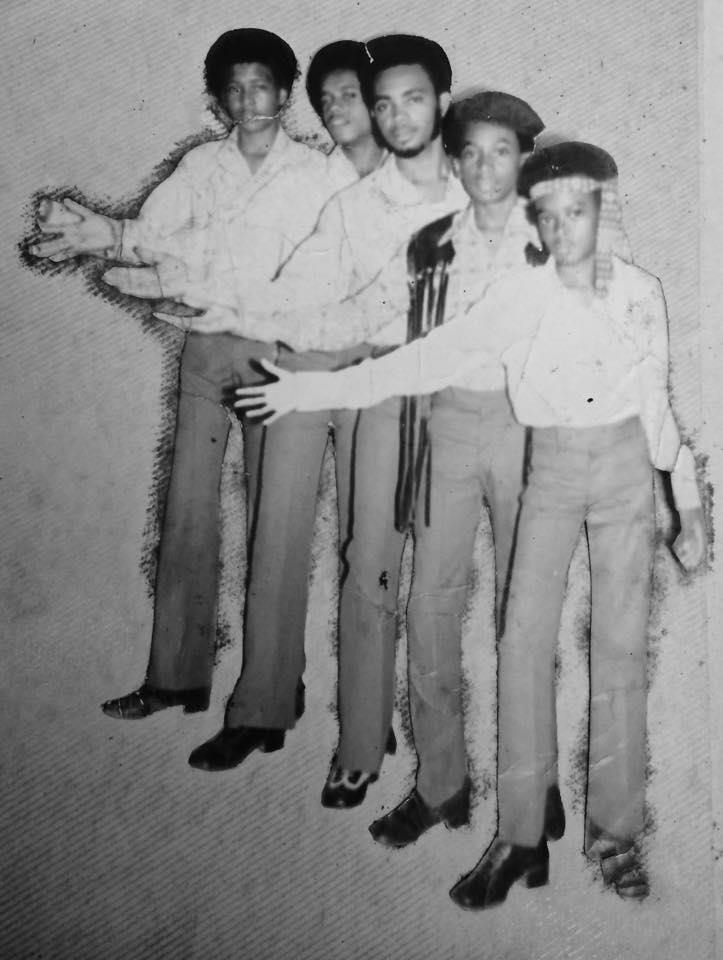
Clevie Browne : Let me go back to the beginnings, I grow up in a house with all my brothers choosing music as a career path that was first and foremost. I was fortunate to have parents who encouraged it, most homes in Jamaica their parents encourage their children to be lawyers, doctors, that kind of career paths but we recognize that we could not have a country with only doctors and lawyers…It would not work at all, we need to have entertainment. We love music. I grow up seeing my grandfather playing accordeon and consentina and these kind of things…Going deeper, I discovered that even his parents were playing violin and so and so …So we love music, have it inna our blood, music was there. All my brothers today are musicians. We started a group in 1972 called the Brownie Bunch. Glen Browne is my eldest brother (he’s Taurus Riley bass player today), Dalton Brownie, guitarist – and present Freddie Mc Gregor artistic director – Big Ship production, Noel Browne, he produced « Knocking on heaven’s door » with Ed Robinson, he designed Big Ship studio too. He did « Heads High » with Mr Vegas, Main Street Crew and so and so, and of course myself : Steely and Clevie. My children also are taking that direction, my son Nile Browne, he’s a producer but he’s in college at the moment. Anyway, we were invited to work on a recording session with Earl 16. Earl 16 was also produced by Augustus Pablo, he did a lot of work with him. So Steely and I linked up after my brother Dalton went to the 12 Tribes of Israel and became a Rastafarian, Steely’s mother was an executive in the 12 Tribes, Sister Nanny they used to call her, I don’t know if the name was related to the Marroon about she got the name. Steely followed my brother Dalton, home. Our home was open to anyone interested in music. My mother taught piano, even today she’s 87 and still teaches piano, still teaching, keeping her mind active. She does the things that will keep her far from being senile and at 87, she remembers things when she was 2, she’s the family archivist I would say, she archives everything, she would tell you the day I got married, everything….
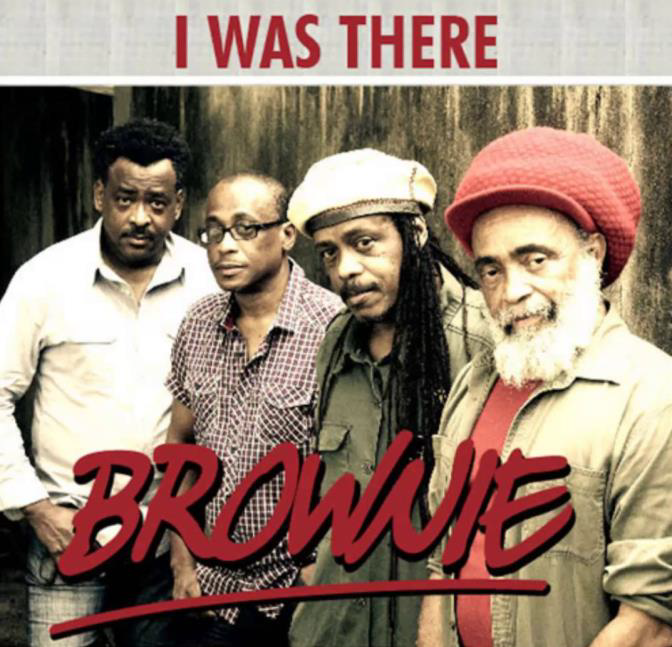
Clevie Browne : Steely came to my house and we started doing a jam session, recognize that we had similar tastes for music but Steely, as he developed as a musician, he ended up working with Gregory Isaacs eventually and started touring the world with Gregory Isaacs. In the 70’s, I worked on a session with Steely. After the sessions with Earl 16, Augustus Pablo liked the sound we had, and started invited us to work on some sounds We worked on « Africa must be free » Hugh Mandell’s album, and White Mice and Yami Bolo were amongst the team. We ended up doing sessions at Tuff Gong studio with Nadine Sutherland when she won the taste talent contest in the 70‘s …We went to Tuff Gong and one night we were finishing working on a song, were waiting on a cab to pick up a taxi and I did not know Bob Marley was upstairs and actually came and was looking on the session. He liked the song then (Steely on piano, Ity was a bass player they call him Left Toe, Sangy Davis on guitar, Dalton my brother on guitar as well), we were waiting on the cab and Bob Marley came down. We sat on the steps, working out a song, and he said » if oonuh willing, mek we go record it to me » ! Tune recorded with Bob is « Stiff necked fools » [9] and we worked too on « We come from Trench Town » as well, I think there was a third song but not sure, a thing that was not released, it was not completed. Bob Marley was a king, a Reggae king to most people, so I made the taxi leave of course just to do this session with Bob.
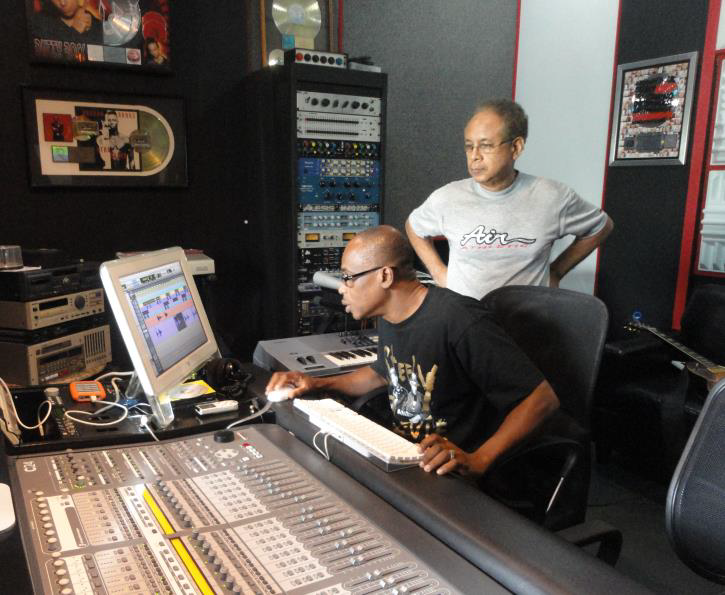
Clevie Browne : To me that was one of the greatest experiences of my life, he was meticulous, yet humble, and embraced technology because that was the first session recorded where a click track was used on every songs which made it easier to remix. Yes, Bob Marley recorded with a click ! And then listening to Bob Marley’s music, I also recognized he was one of the first reggae artists to record with a riddim box. « So Jah seh » was recorded with it. So if the king uses that riddim box…. I started embracing technology as well although I was trained as a drummer. I read drums music, I taught myself to read drums music and out of that I got exposed to all type of rythms patterns from all over the world, I was not limited anymore to just what I heard…and I could read drums music and starting to do military rudiments, I decided to start using what I’ve learnt over the years «
CHINATOWN RYTHM : One of Steely and Clevie’s Digital standards
Clevie Browne : There was a riddim called Koloko ….Steely played the bass to complement, starting putting rolls, different military styles beats and I improvised on and used some of what I’ve read and the military rudiments but outside of that, I started tuning drums.. I came with a beat called Giggy. Dave Kelly was an engineer, not having our own studio as yet, recording some stuff at Penthouse studio, some things at Music Works, Gussie Clarke studio, well we’ve been doing a lots of sessions with Donovan Germain, liking the sound and the style we had, And also Music Works, with Gussie Clarke we worked on Telephone love, lots of hits, most of the hits. As a drummer – I sing as well – because my first recording actually was as a singer. My brothers and I we started singing before we played so I learnt harmony from my mother where I started learning chords too, their structure, and the mood that it gives you. For instance, recognizing that some sad songs you’ve got minor, and if you want something romantic you might go major. When I decided to go drums, my brother, Glen – he was the first in the family to start playing an instrument -, when my father used to travel a lot to the United States he lived there for a while before he get married to my mother. My brother wanted to play bass and asked my father to buy him a bass guitar. My father saw a six strings regular guitar thinking it was a better guitar than the 4 strings. He sent the guitar and my brother was not happy, my brother who follows Glen in terms of age, Dalton, decided to take up the guitar and started play guitar and Glen waited to have a bass guitar. Keith and Tex [10] they used to come to my home, Bob Andy, people like that, my father was a builder in the construction industry and he built a room to try get the noise out of the house because we started banging and playing everything. Keith and Tex started writing songs at my home and little by little, bands asked us if they could rehearse at our house. MickeyChung and Geffrey Chung were members of the No Generation band and when they heard us coming down to rehearse, when they heard us singing one day, Geffrey Chung said: « oh why don’t you record like the Jackson 5 group ? At the time I was like one year younger than MJ and admired his songs, the range he was singing and I could sing like that too. So I ending up doing my first song doing a cover of « We’ve got little things going » recorded by the Jackson 5 originally but I really wanted to play an instrument outside of singing and Glen sat us down one day and asked us : which instrument you’d really want to play ? I chose drums, Dalton the guitar, etc…What we ended up was to be able to form a band but being in school and each one of us being in different years school and so and so we all got absorbed into different groups which teared us apart of the vision of being together in the same band, and started touring etc…I became a member of the InCrowd band. That was 1978 and Steely joined the Roots Radics band starting playing a lots of sessions. Radics playing on Junjo Laws productions (Yellowman : « I am getting married in the morning », « Zuguzum« , « Diseases » from Michigan and Smiley, whole heap of tunes…. Steely still wasn’t really happy, he wanted to work with me and was to tour with Gregory Isaacs. He worked on a song popular in France with Roots Radics band and it hit in France [11] He played on « Night nurse », « Black Cinderella » by Errol Dunkley. Anyway, Steely went to France and recorded there this big hit.
Willie Stuart (Third World band) sold me my first Drums set as my first drum machine : an Oberheim DX
Clevie Browne
» Body Work Shop « , » Bogle » or » Giggy » rythm : another turning point rythm in Dancehall history
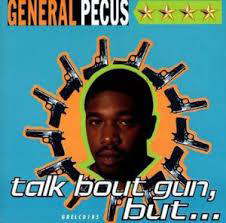
DJ General Pecos LP cover – Body Worshop » song it’s one of the very first tunes on the Bogle rythm created by Steely and Clevie 1991 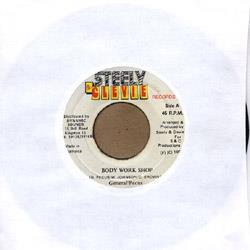
DJ General Pecos LP Cover – Body Worshop » song it’s one of the very first tunes on the Bogle rythm created by Steely and Clevie 1991
Clevie Browne : « Drums were my passion. I started hitting on anything I could find with my mother baker, spoons, etc… Until my father could not take it anymore and bought me a drums set. Willie Stuart from the Third World band he used to come at my house and I learnt a few riddims from him. I must big up Willie Stuart. Third World was a success story… They were touring a lot and buying equipment so Willy bought a Oberheim DX Drum machine (see pic) he decided to sell because he bought a DMW after that, thinking that it is better, so of course I was interested. He sold me my first drums set as well, but when he bought the drum machine, Oberheim DX Drum machine I was always in technology in the early days, when my brother Glen had a sound system the man who made his amplifiers used the same room we had as a music room ; the wind, the transformers and so and so. As kids we always hang around him, he taught us how to make magnet and little things to experiment, could do mass code and all things like that, batteries that could shock and so and so. We had a jockey used to live next door too : The Mackenzies and they used to make batteries to shock horses, doing horse racing used to shock to make them faster (I give you too much if their secrets but it’s part of history). I was fascinated by drums machine. I used to open them out and look out how the whole tings was made and, the E Prom [12], the chip that makes the sound, I used to shift them around, putting the chip that was meant to be put in, the snare slot for instance, put it in different places, and realize that different sounds that were not natural that you would get from a natural drum kit, starting getting different kind of sounds and there was a chip made to the place tin the percussion slot, I started moving them around and put it in the tom slot : So, the Chinatown riddim [13] was born, born for Bobby Digital….Hit songs, knowing keys cause I used to sing, I never played guitar it was my brother started eventually playing guitar, but my mother used to teach us harmony, I started pitching things, creating melodies out of drums and things like that and the Giggy riddim was one of those, pitched to specific notes. The other thing that I believe made Steely and Clevie sound though, sound like something, different from one I was hearing from everybody else who even started copying us playing, computer stuff and so, is that my drums sounds I used to listen for dominant overtones and so although things were percussive, the snare drums and so and so, I pitched everything to the key of the music although it was drums, I used to hear overtones and snare that used to have a dominant tone to it, just put everything in a certain key, to lock with the key of the music although it was percussions or drum. Even Punnany riddim, the cow bell, listening to the tok tok , listening to that note, that tone, was more dominant than everything else and it just made everything sound so sweet and better even if it is a drum roll, tu ku tu ku tum . You know like tuning things to a certain format…I don’t know, it just made things sound better ».
Steely could play every songs without any mistakes, his memory was incredible
Clevie Browne
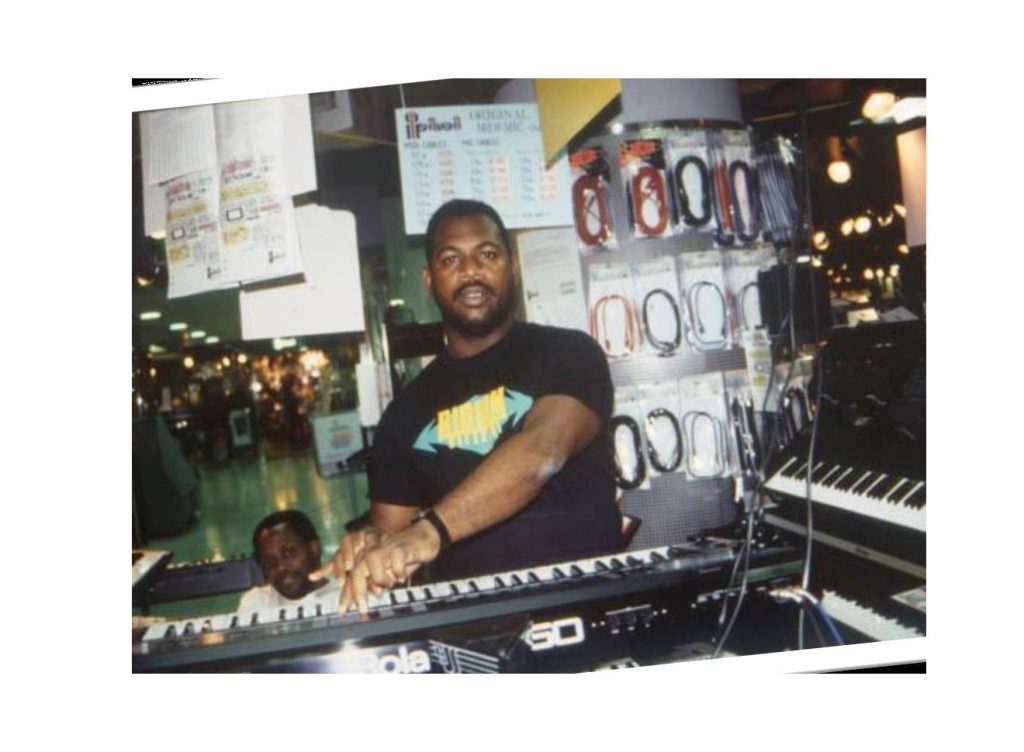
Clevie Browne : He grew up in the ghetto, lived the hard life that any ghetto youth would live, growing without his father, grow with his grandmother and mother but his mother was young when she had him, and he had to make life by himself quite early he started selling The Star to survive, This Jamaican newspaper at the time introduced a competition they called Star King, for the person who sold the most newspapers would get a special prize, and Steely won it ! And I admired that about Steely that although he grew up really poor, he was a fighter. He would read the newspaper before he even sold one copy and he could tell you anything that happen. Steely had a special gift, photographic memory that was so amazing…You could give Steely 100 digits, he looked at it for about 30 seconds and it was burnt into his memory but he did not have the opportunity to go to great schools, he might have been really somebody else, different than Steely the musician. And after years from the 70’s playing music, Steely could go back and play every songs without any mistakes, his memory was incredible. So he was really special. Steely also had something different about him, he could tell you things before it happened. Seriously and I tell you this is really sad for me : Steely stopped one day in traffic and said : « Clevie, I’m going to die. Steely predicted his death, he told me in 2008, he saw it, he said : « yes I see it ». Steely could tell you that certain things were going to change in the music industry, he could tell you if somebody wanted us to do a recording session and was going to try to rip us off. So I really relied on Steely a lot to as a guide.
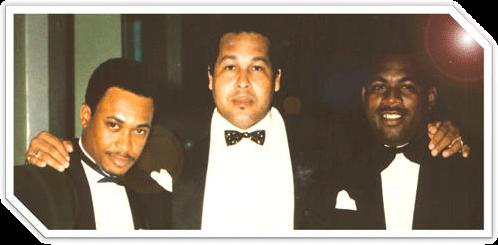
and Steely Jonhson – credit : droits réservés
There was one other person that we always said was the hand between the Steely and Clevie with King Jammys, that’s my brother Danny Browne, he was the guitarist on most of the songs that guitar was required for and Dalton as well, he played guitar on some of the songs and the songs that you hear on Steely and Clevie, it was either Danny or Dalton. Apart from that, there is one other song « Boops » riddim with Supercat, that was « Bore peep » who played on it, have to give him credit. Of course, there were songs if there is anybody else required : horns, anything at all, we still guided it as the producers than musicians, we would be telling how we wanted it, certain texture, that might be different from how the person would normally play and tone the instrument. We went for things that we could feel based on our experience over the years, listening to Studio One and so and so, and you know I worked at Studio One as well for a number of years in the late seventies. I was at the Studio overdubbing a Bob Marley song when Bob Marley died. Coxsone stopped the session and said : » Clevie come here, listen, it’s on the news, Bob Marley died » and I was working on a Bob Marley song, modernizing some of the things that, you know, he felt needed to be worked on.
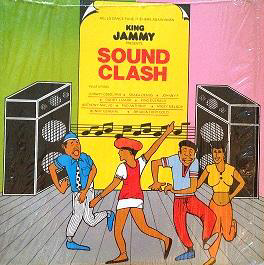
You still did not tell us : where do the « huuuuu » background vocals come from on the « Giggy » (Body work shop) riddim ?
Things that people thought they were samples, we actually made the songs ourselves, even on the « Nine night riddim », the tip tip tip and you hear the ooooo oooo voice, it’s me singing and people think it like samples, so Giggy (Body work Shop), there are things that we would go for people who could create the songs that we wanted. We went for opera singer : « Year 4″ with Beenie Man, it’s an opera singer, we actually took the person in the studio and recorded it, telling him the melody we wanted, is like really music for us, is like science really. We were inventing, putting the rights element on components to make it connect with people, cause we study people, we watch people, it’s a lot of psychology in getting artists to perform the way you want them to perform. There were times when Steely and I create a certain feeling in the studio, if we wanted to be happy, we told jokes sometimes, if we want somebody to sing a song in a way to feel sad, sometimes we would tell sad stories but many times artists would never know what we were doing, you know, we were trying to create the feeling that might be necessary to get the best out of the song. Dawn Penn and « No No No » for instance, we had her standing in the engineering room and sang the song and she said : « oh maybe should I sing it again in the voicing room ? » and we said : « Allright » just to satisfy her but it did not sound the right way, we mixed the one that was sung in the engineering room standing in front of us while we played the riddim like the old days of playing and singing together and the song hit ! It happened in 1989 or so earlier, our first billboard hit was with Foxy Brown on the Taxi riddim [14] « Can I hold you tonight » the first hit, it was recorded in the engineering room, to get the mood and the feeling that the artist just was not getting in the voicing one. And at Jammy’s actually, before he built up a bigger room, the artists used to stand in front of the mixing board and we set up the microphone right there pointing in that direction cause it was basically one room, and it created a certain kind of song, hit after hit.
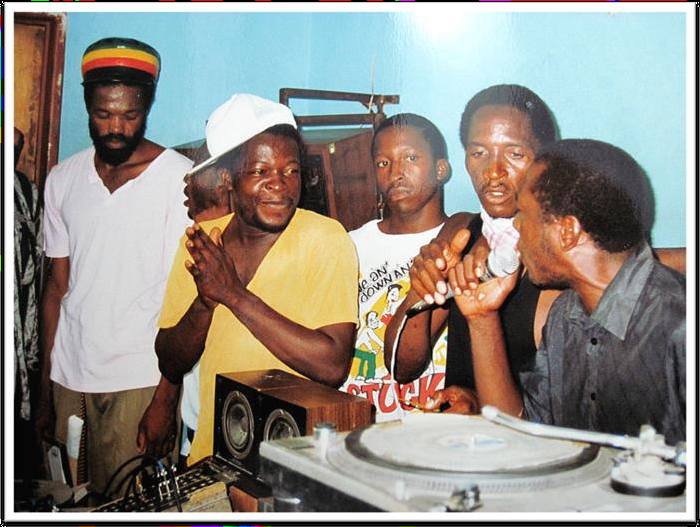
Sound systems [15] played a very great role in training artists, make them spontaneous, making dub plates, they had to be spontaneous, artists had to just perform and dubplates trained a lot of artists like this, not on tape, I am talking about the era when you had the dub machine and you better do the dub without messing up, just straight non stop, Ninjaman was great that way, just non-stop and I tell you and when technology came around, we started punching it, doing overpart, so and so which really makes music sell on the international market, sometimes you need perfection but actually if you listen to most Studio One songs today where people take the riddim straight down and you maybe have two or four tracks and you cannot do overdub. Most of the songs of that little era, it was human and we did not mind, sometimes we did, Steely played his bass lines non stop to finish. Basically you’ve got spoiled over the years, getting technology, you start fixing things but sometimes I really like to live it a little real… The things were really real, leave the mistakes ! «
Interview by Steph Live Up Delphin, June 2013 Kingston, Jamaica. Pictures taken from Cleveland Brownie and Danny Brownie Facebook accounts. Other ones from Stephan Delphin. Jammy’s studio with Fuzzy Jones, author unknown asthe one with King Jammys. Top picture : Clevie playing drums – by Y.Yoneda during the « Steely & Clevie’s Legacy tour : tribute to Steely » sept. 2012, Japan (Shizou Ishii promotion).
- [1] Most probably Nando Boom with « El desorden » tune or « Dem Bow » Shabba Ranks cover one because « Tu Pun Pun » from El General isn’t on a pocco riddim
- [2] Digital B label
- [3] Shabba Ranks – As Raw As Ever LP 1991 Epic Music
- [4] Shabba Ranks – X-Tra Naked LP 1992 Epic Music with the wicked « Bedroom Bully » song produced by Steely and Clevie
- [5] Known as Body work shop riddim too
- [6] A Zion revival religion practice
- [7] 2001 WATCH VIDEO « >www.youtube.com/watch?v=GqOJg2a89xE
- [8] Steely and Clevie own studio
- [9] » If you want, come let’s go record it for me »
- [10] Keith & Tex are a jamaican rocksteady duo best known for their 1967 hit « Stop That Train ».
- [11] Probably « Ok Fred » from Errol Dunkley
- [13] Trevor Sparks, Bye Bye Love 1987 1988 King Jammys label [14] Foxy Brown – Baby Can I Hold You Tonight ( Taxi Riddim ) 1989 Steely and Clevie label
- [15] Steely and Clevie owned Silverhawk sound system. Still touring with Clevie, Richie Pooand Danny Pepperseed
